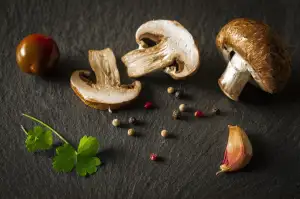Perfectly Poached Eggs: A Step-by-Step Guide to Mastering this Classic Breakfast Delight

- Equipment needed for poaching eggs
- Step-by-step instructions for poaching eggs
- 1. Boiling water and adding vinegar
- 2. Cracking the eggs into separate bowls
- 3. Creating a whirlpool in the water
- 4. Sliding the eggs into the whirlpool
- 5. Cooking the eggs for desired doneness
- Tips for achieving perfectly poached eggs
- Serving suggestions for poached eggs
Poached eggs, with their delicate and silky texture, are a classic breakfast delight that never fails to impress. Whether served on toast, atop a bed of greens, or as part of a Benedict-style dish, poached eggs add a touch of elegance to any meal. While they may seem intimidating to make, mastering the art of poaching eggs is easier than you might think. With a few simple steps and some practice, you can enjoy perfectly poached eggs in the comfort of your own kitchen. So let's dive in and explore the secrets to achieving this culinary masterpiece!
Equipment needed for poaching eggs
To successfully poach eggs, you'll need a few essential tools. First and foremost, a medium-sized saucepan with a lid is crucial. This will provide the perfect environment for gently cooking the eggs. Additionally, a slotted spoon is necessary for removing the poached eggs from the water without breaking them. A timer or clock will help you keep track of the cooking time to achieve your desired level of doneness. Lastly, having separate bowls to crack each egg into before sliding them into the water will ensure that any broken yolks or shells can be easily discarded before cooking. With these basic tools in hand, you'll be well-prepared to master the art of poaching eggs.
Step-by-step instructions for poaching eggs
1. Boil water in a medium-sized saucepan and add a tablespoon of vinegar. The vinegar helps to coagulate the egg whites faster, resulting in a neater poached egg.
2. Crack each egg into separate bowls or ramekins. This will make it easier to slide the eggs into the water without breaking the yolks.
3. Create a whirlpool in the boiling water by stirring it with a spoon. The whirlpool motion helps to keep the eggs together and prevents them from spreading out too much.
4. Carefully slide each egg into the center of the whirlpool. The swirling water will help to shape the eggs and prevent them from sticking to the bottom of the pan.
5. Cook the eggs for about 3-4 minutes for a soft, runny yolk or 5-6 minutes for a firmer yolk. Use a slotted spoon to gently lift each egg out of the water and check for doneness.
Remember, practice makes perfect when it comes to poaching eggs, so don't be discouraged if your first few attempts aren't picture-perfect. With time and patience, you'll soon master this classic breakfast delight!
1. Boiling water and adding vinegar
To start the process of poaching eggs, you will need to bring a pot of water to a gentle boil. Add a splash of vinegar to the water, which helps to coagulate the egg whites and prevent them from spreading too much in the water. The vinegar also adds a subtle tangy flavor to the eggs. Make sure not to add too much vinegar, as it can overpower the taste of the eggs.
2. Cracking the eggs into separate bowls
Cracking the eggs into separate bowls is an essential step in achieving perfectly poached eggs. This technique ensures that any broken shells or bad eggs can be easily discarded without ruining the entire batch. It also allows for better control when sliding the eggs into the water, preventing them from clumping together. By cracking each egg into a separate bowl, you can inspect them for freshness and quality before adding them to the pot. This simple yet crucial step sets the foundation for a successful poaching experience.
3. Creating a whirlpool in the water
Once your water is boiling and you have added the vinegar, it's time to create a whirlpool. This step is crucial for achieving perfectly poached eggs with a beautifully formed shape.
To create the whirlpool, take a spoon or spatula and start stirring the water in a circular motion. The speed of your stirring should be enough to create a gentle vortex in the center of the pot.
The whirlpool effect helps to bring the egg whites together, ensuring they wrap around the yolk and form a neat, compact shape. It also prevents any stray egg whites from spreading out too much in the water.
Continue stirring until you have a well-defined whirlpool in the center of your pot. Make sure it is still spinning gently before moving on to the next step.
Creating this whirlpool may take some practice, so don't worry if you don't get it right on your first try. With time, you'll become more proficient at creating and maintaining the perfect swirling motion in your pot of water.
Remember, mastering this technique will greatly enhance your poached eggs' appearance and texture. So take your time and enjoy the process of creating that mesmerizing whirlpool before moving on to sliding in those eggs!
4. Sliding the eggs into the whirlpool
To slide the eggs into the whirlpool, gently tilt the bowl with one hand and use a spoon in your other hand to carefully slide each egg into the center of the swirling water. The whirlpool will help to create a neat and compact shape for your poached eggs. Take care not to overcrowd the pot, as this can cause the eggs to stick together. Repeat this step for each egg you want to poach.
5. Cooking the eggs for desired doneness
3.5. Cooking the eggs for desired doneness
The cooking time for poached eggs will vary depending on how you like them done. For a soft, runny yolk, cook the eggs for about 2-3 minutes. If you prefer a slightly firmer yolk, cook them for 4-5 minutes. Keep in mind that the whites should be fully set and no longer translucent.
To check if the eggs are cooked to your liking, gently lift one out of the water with a slotted spoon and give it a gentle poke with your finger. The yolk should feel soft but not too jiggly for a runny yolk, or slightly firmer if you prefer it less runny.
Remember that practice makes perfect when it comes to poaching eggs, so don't be discouraged if your first few attempts aren't exactly as you envisioned. With time and experience, you'll become an expert at achieving your desired level of doneness for perfectly poached eggs.
Tips for achieving perfectly poached eggs
1. Use fresh eggs: Fresh eggs have a firmer white and a yolk that holds its shape better, resulting in a neater poached egg.
2. Add vinegar to the water: Adding a tablespoon of vinegar to the boiling water helps the egg whites coagulate faster, ensuring a compact and tidy poached egg.
3. Crack eggs into separate bowls: Cracking each egg into a separate bowl before sliding it into the water allows you to inspect it for any shell fragments or imperfections.
4. Create a whirlpool in the water: Using a spoon, stir the boiling water in one direction to create a gentle whirlpool. This will help wrap the egg white around the yolk, giving your poached egg that classic round shape.
5. Slide eggs into the whirlpool: Gently slide each cracked egg into the center of the whirlpool, allowing the swirling water to envelop and cook them evenly.
6. Cook eggs for desired doneness: The cooking time will vary depending on how runny or firm you prefer your yolks. For soft-poached eggs, cook for about 2-3 minutes; for medium-poached eggs, cook for 4-5 minutes; and for hard-poached eggs, cook for 6-7 minutes.
By following these tips, you'll be well on your way to mastering perfectly poached eggs every time!
Serving suggestions for poached eggs
Serving Suggestions for Poached Eggs:
Once you have mastered the art of poaching eggs, there are endless ways to enjoy them. Here are some serving suggestions to elevate your poached egg experience.
1. Classic Eggs Benedict: Top a toasted English muffin with a slice of Canadian bacon or smoked salmon, a perfectly poached egg, and drizzle with hollandaise sauce.
2. Avocado Toast: Spread mashed avocado on a slice of crusty bread, top with a poached egg, and sprinkle with salt, pepper, and red pepper flakes for an extra kick.
3. Salad Enhancer: Add a poached egg to your favorite salad for added richness and creaminess. The runny yolk acts as a dressing that coats the greens beautifully.
4. Grain Bowls: Poached eggs make a nutritious addition to grain bowls. Combine cooked quinoa or brown rice with roasted vegetables, protein of choice, and top it off with a perfectly poached egg.
5. Asparagus Delight: Serve blanched asparagus spears topped with poached eggs and grated Parmesan cheese for a light and elegant brunch option.
6. Ramen Upgrade: Elevate your bowl of ramen by adding a poached egg. The velvety yolk adds richness to the broth and complements the other ingredients perfectly.
Remember to season your poached eggs with salt and pepper before serving. The possibilities are endless when it comes to serving poached eggs – let your creativity shine!
In conclusion, mastering the art of poaching eggs can elevate your breakfast game to new heights. With just a few simple steps and some practice, you can achieve perfectly poached eggs every time. Remember to use fresh eggs, create a whirlpool in the water, and cook the eggs to your desired doneness. Experiment with different serving suggestions like avocado toast or Eggs Benedict to truly enjoy this classic breakfast delight. So go ahead, give it a try and impress your family and friends with your poaching skills. Happy cooking!
Published: 12. 01. 2024
Category: Recipes



